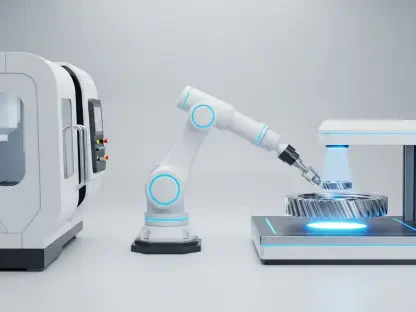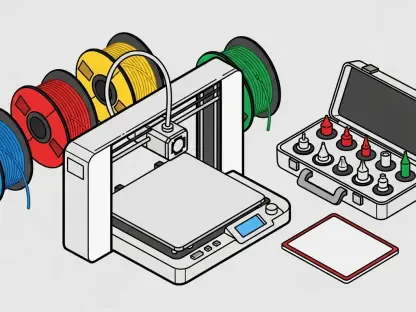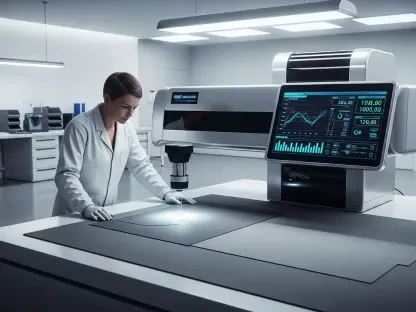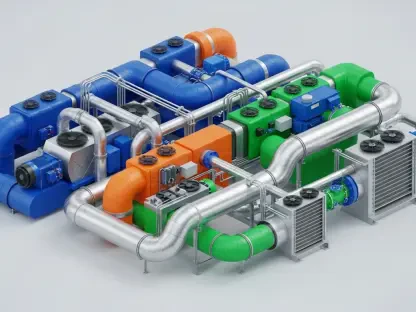Europe is making significant strides in transforming its energy landscape with the introduction of Europe’s first fully automated, large-scale combined heat and power (CHP) plant by E.ON and MM Neuss, a part of the Mayr-Melnhof Karton Group. Located at the MM Neuss cartonboard factory, this state-of-the-art facility embodies the future of energy supply, characterized by reduced emissions, reliability, and economic viability. As Europe continues to navigate the energy transition, this CHP plant stands as a pioneering model of integrating automation and sustainability in energy systems. This groundbreaking facility not only addresses current energy demands but also sets a precedent for future developments in the region’s energy infrastructure. It shines a spotlight on a promising path where digital innovation meets green energy production, underscoring the potential of advanced technologies in driving sustainable energy supplies.
The Role of Automation in Energy Production
Central to this transformative project is the E.ON IQ Energy® control solution, marking a significant milestone in European energy systems by automating a CHP plant of such magnitude. This smart control system allows real-time management and synchronization of the power plant with production processes and grid connections. By autonomously governing operations like start-up, shutdown, and load adjustments, the system ensures maximum efficiency and operational flexibility. The digitized control capabilities of the plant enable it to function without human intervention for up to three days, highlighting significant advancements in operational reliability and automation. This technological prowess not only enhances the plant’s efficiency but also sets new benchmarks for future large-scale energy projects. By seamlessly integrating production demands with market fluctuations, this system exemplifies how automation can contribute to achieving optimal energy solutions.
Commitment to Sustainability and Environmental Goals
The plant’s blueprint is a testament to its commitment to sustainability and resilience. Utilizing a combined cycle gas turbine (CCGT), the plant generates an electrical output of 22 megawatts and a thermal output of 59 megawatts while substantially reducing CO₂ emissions by nearly 22,000 tons annually compared to standard methods. This remarkable efficiency is bolstered by a high fuel utilization rate of approximately 91 percent, positioning the facility among the elite CHP plants globally. A fully automated reserve boiler system supports seamless transitions between main and reserve modes, thereby ensuring an efficient and reliable energy supply. This strategic redundancy plays a crucial role in security and efficiency, making the plant a paragon of modern energy practices. By combining top-tier efficiency with a robust operational framework, the plant offers valuable insights for future projects targeting emission reductions and sustainable energy advances.
Innovative Hydrogen Integration Strategy
One of the standout features of the project is its design for hydrogen compatibility from its inception. The facility can currently incorporate a ten percent hydrogen content in its fuel mix, with the potential to scale up to a full transition to hydrogen in the future. This foresight aligns with E.ON’s ambitious climate neutrality goals slated for 2040, ensuring the plant’s adaptability to evolving technological and regulatory landscapes. Remaining adaptable to future energy sources like hydrogen is essential for achieving long-term climate-neutrality objectives. Here, technological foresight meets environmental responsibility, demonstrating a strategic alignment with broader sustainability goals. By prioritizing hydrogen readiness, the plant not only underscores its immediate contributions to clean energy but also its role as a catalyst for innovation and improvement in energy practices throughout Europe. This aligns with ongoing efforts across the continent to expand and optimize renewable energy sources.
Strategic Importance of the Collaboration
The commissioning of the Neuss CHP plant represents more than just a significant technological achievement; it signifies a coherent strategic vision for energy solutions that are efficient, sustainable, and future-proof across Europe. The collaboration between E.ON, a major energy player in Europe, and MM Neuss underscores the benefits of strategic industrial partnerships in achieving climate-neutral energy objectives. This project is illustrative of how combining expertise and resources can lead to significant advances in energy technology and infrastructure. This project exemplifies new standards being set in the industry where operational excellence meets sustainability. Such partnerships underline the role of cooperation in navigating the complex energy transition landscape. As the plant sets a standard for future endeavors, it emphasizes the importance of innovation and commitment in achieving the continent’s broader energy goals, showcasing success in joint industry efforts to foster sustainable energy transitions.
Future Prospects and Strategic Vision
The timeline for the plant’s development was impressively short, starting construction in September 2022 and completing on schedule by December 2024. E.ON’s long-term operational plans, extending to at least 2045, reflect a strong commitment to maintaining and advancing this modern infrastructure for future needs. This project not only highlights effective project management but also dedication to transforming Europe’s energy sector. E.ON’s dedication, along with the participation of the Mayr-Melnhof Karton Group’s MM Neuss, paves the way for innovative and sustainable growth in the packaging and paper industry. With its expansive distribution network and vast customer base, E.ON is well-positioned to lead Europe’s green energy transformation. Their Energy Infrastructure Solutions division continues to drive reliable, tailored, and sustainable projects across numerous regions in Europe. Both E.ON and MM Neuss remain committed to advancing technology and sustainability in the pursuit of climate-neutral energy pathways.
Conclusion: Pioneering the Path Forward
The launch of the Neuss Combined Heat and Power (CHP) plant is more than just a feat in technological advancement; it reflects a well-planned strategic approach to developing energy solutions that are efficient, sustainable, and prepared for the future throughout Europe. This initiative, born from the partnership between E.ON, a leading energy company in Europe, and MM Neuss, highlights the advantages of industrial collaborations in meeting climate-neutral energy targets. It demonstrates how pooling expertise and resources can drive major progress in energy technology and infrastructure. By setting new industry standards, this project bridges operational excellence with sustainability. Such alliances stress the significance of joint efforts in facing the intricate challenges of energy transition. As the Neuss plant becomes a benchmark for future initiatives, it accentuates the vital role of innovation and commitment in realizing the continent’s larger energy visions. Ultimately, it showcases the potential of teamwork in promoting sustainable energy transformations across Europe.









